Material Collection
Mineral
Drawn from the earth, the ingredients in mineral-based products offer natural solutions for painting, casting, insulation, and numerous other applications. Because they come from the earth, these products also tend to have the benefit of being completely biodegradable. The products in this collection offer alternatives to synthetics that are healthier for our bodies and our environment.
Mineral
9 products
About Our Collections
The goal of our collections is to help promote transparency in the material ingredients of building products by fostering knowledge and awareness of products and materials for which life-cycle information is available, and that have environmentally, economically, and socially preferable life-cycle impacts.
Keep an eye out for the following symbols:
A Healthier Affordable Building Product
Products with the designation of "Healthier & Affordable" were specified and installed in at least one of our Case Studies of healthier affordable housing.
Available at the Donghia healthier Materials Library
The Donghia healthier Materials Library library is open to Parsons student and faculty. Learn more about access and opening hours here.
Low Embodied Carbon
“Embodied Carbon” is the total amount of carbon emitted during the process of making a material. *HML refers to a manufacturer's EPD to determine whether a product's A1-A3 carbon emissions falls within HML's threshold for Low Embodied Carbon.
New Product
This product has been added to the collection within the past six months.
Product in Development
Products with this designation identify they are currently scaling or only available in markets outside of the building industry. they could be experimental or in use in capsule collections.
Available in the EU
Products with this designation are currently available only in the European Union and identified as being an exemplary healthy option in the respective product group.
Ingredient Disclosures
There are several ways of evaluating a material’s health that we include with product information. Disclosures are reports by manufacturers about product ingredients, impacts, or other attributes.
Key Disclosures include:
Health Product Declaration (HPD)
A voluntary technical specification for reporting information on product contents and associated health information, intended to be the health-analogue to Environmental Product Declarations (EPDs).
Declare Label
Declare is a transparency platform and product database that answers three questions:
1. Where does a product come from?
2. What is it made of?
3. Where does it go at the end of its life?
Environmental Product Declaration (EPD)
A standardized format for communicating the environmental effects associated with a product’s raw materials extraction, energy use, chemical makeup, waste generation, and emissions to air, soil, and water.
Safety Data Sheet (SDS)
A reporting format that provides basic information about a material’s chemical ingredients, the potential safety hazards to installers, and recommended practices for installation.
USDA Certified Biobased Product Label
Managed by the U.S. Department of Agriculture (USDA), the goal of the BioPreferred Program is to increase the purchase and use of biobased products.
Other
| Manufacturer | Product | Ingredient Disclosures |
|---|---|---|
| Graphenstone | Graphenstone |
GraphenstoneAvailable At the Donghia Materials LibraryLow-Embodied Carbon MaterialGraphenstone has updated traditional lime paint formulas with their product by adding graphene, a material made from carbon. Graphene lends the paint extreme strength, durability, and washability. Additionally, the use of lime creates a paint that is not only free of harmful substances, but one that also actively improves indoor air quality by absorbing toxics and CO2. The white interior and exterior paint have a Cradle to Cradle Gold certification. This product meets HML's criteria for low embodied carbon in part because of its use of renewable energy and CO₂ absorbing ingredients. As the product is produced in Spain, shipping can negate it's low emission score. *NOTE: Recently, researchers have raised health concerns about graphene. According to the manufacturer, Graphenstone uses Nano Fibers of Graphene (NFG), which has a larger structure that is not harmful to human health. CategoryPaint / Mineral, LimeManufacturerGraphenstone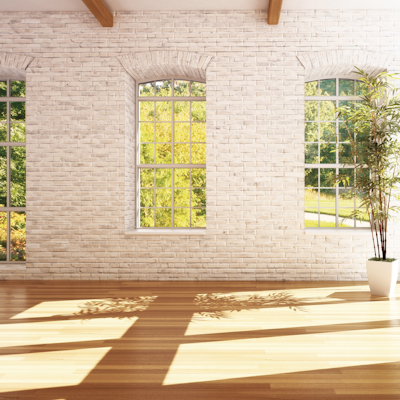
Material composition*Calcium Hydroxide (Lime) 40-70%, Water 10-30%, Calcium Carbonate 5-20%, Additives 1-5% *as reported by the manufacturer AVAILABLE SIZINGAvailable in 1L, 4L, 12.5L, and 15L COLORSAvailable in a wide range of colors. White is the only color with a C2C Gold Certification. CERTIFICATIONS & DISCLOSURES
Health Product Declaration (HPD)
Declare Label
Environmental Product Declaration (EPD)
Safety Data Sheet (SDS)
USDA Certified Biobased Product Label
Other
Cradle to Cradle | Gold
Last UpdatedApril 02, 2024 |
| Roxul | Safe |
SafeUsed in Healthier Affordable HousingAvailable At the Donghia Materials LibraryLow-Embodied Carbon MaterialSafe is batt insulation made from mineral wool that provides acoustic dampening and is non-combustible. Safe N Sound is similar to Rockwool's Safe product but is primarily for interior applications. It is Greenguard Gold Certified, meaning it meets strict requirements for VOC and formaldehyde emissions. This product meets HML's low embodied carbon standards per Rockwool's EPD for its stone wool insulation. Production facilities are located in the US and Canada. For shorter transportation, the North American Market is therefore preferable. Rockwool's Ontario location uses a substantial amount of recycled material. *NOTE: This product contains phenol-formaldehyde. According to the manufacturer: "Phenol formaldehyde is allowed in rigid mineral wool insulation for exterior applications (such as rain screen assemblies or foundation insulation). While rigid mineral wool insulation does contain some formaldehyde, most of the formaldehyde is eliminated in the production process through a chemical reaction and high heat. Rigid mineral wool insulation installed on the exterior of the building possess less risk to humans and ecosystem than rigid foam insulation products, which almost always contain HFRs and use blowing agents with high global warming potential." Roxul's R-value range is declared at 4.2/inch. CategoryInsulation / Fibrous, Cellulosic, Granular, Mineral FiberManufacturerRoxul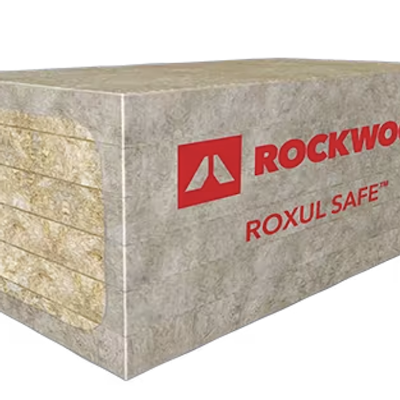
Material composition*Stone Wool Biosoluble 95-100%, Syrups Hydrolyzed Starch 1-2%, Phenolic Formaldehyde Binder 0-1%, Urea Binder 0-1% *as reported by the manufacturer AVAILABLE SIZINGAvailable in a variety of sizes and thicknesses for wood and metal framing COLORSTaupe CERTIFICATIONS & DISCLOSURES
Health Product Declaration (HPD)
Declare Label
Environmental Product Declaration (EPD)
Safety Data Sheet (SDS)
USDA Certified Biobased Product Label
Other
GREENGUARD | Gold
Contributes to LEED credits
Additional DocumentsLast UpdatedApril 01, 2024 |
| Romabio | EcoDomus |
EcoDomusUsed in Healthier Affordable HousingAvailable At the Donghia Materials LibraryMineral paints, like Romabio's EcoDomus, provide a great alternative to acrylic paints. They are toxin-free, odorless, asthma-free, and naturally mold-resistant. EcoDomus is available in Matte, Eggshell, and Satin finishes. EcoDomus is an extremely durable, high-performing, mineral paint. The matte paint is designed for interior use, and the eggshell and satin can be used both for interior and exterior wall and trim finishes. This product is also backed by a 20-year warranty against chipping, peeling, and flaking. Thirteen of Romabio's paints, including this one, are Cradle to Cradle Silver Certified. Titanium Dioxide is being used for pigmenting, the whiter the pigment, the more titanium dioxide. Note: We will update the HPD once we received the renewed one. Manufacturer foresees early 2023 for renewal. CategoryPaint / Mineral, Potassium SilicateManufacturerRomabio
Material composition*Water 16.5070 - 58.1590%, Calcium Carbonate 4.766 - 47.4030%, Potassium Polysilicate 1.9740 - 13.8170%, Undisclosed Chemical #1 1.9600 - 25.3460%, Hydroxyethyl Cellulose 0.2890 - 0.7390%, Oxirane, 2-Methyl-, Polymer with Oxirane, Ether with 1,2-Hexanediol (2:1) 0.1760 - 1.0370%, Potassium Methylsilanetriolate 0.0700 - 0.2980%, Glassy Sodium Phosphate 0.0230 - 0.6060%, Poly(Oxy-1,2-Ethanediyl), Alpha-Sulfo-Omega-(Undecyloxy)-, Branched and Linear, Sodium Salt 0.0210 - 0.2720%, Poly[Oxy(Methyl-1,2-Ethanediyl)], _-(1-Oxo-9-Octadecenyl)-_-Butoxy-, (Z)- 0.0190 - 0.1100%, Sodium Bisulfate 0.0140 - 0.1800%, Sodium Hydroxide 0.0120 - 0.1490%, Sodium Persulfate 0.0100 - 0.1230%, Limestone; Calcium Carbonate 0.0000 - 37.7520, Titanium Dioxide 0.0000 - 24.8420%, Talc 0.0000 - 7.3030%, Chlorite 0.0000 - 7.3030%, Aluminum Oxide 0.0000 - 1.2540%, Kaolin Clay (Impurity/Residual), Magnesite 0.0000 - 0.5090%, Starch 0.0000 - 0.4100%, Dolomite 0.0000 - 0.3830, Quartz (Impurity/Residual), Silica, Amorphous 0.0000 - 0.1330%, 1,1,1-Tri(Hydroxymethyl)Propane 0.0000 - 0.1070% *as reported by the manufacturer AVAILABLE SIZINGPint, quart or gallon COLORSAvailable in a variety of colors CERTIFICATIONS & DISCLOSURES
Health Product Declaration (HPD)
Declare Label
Environmental Product Declaration (EPD)
Safety Data Sheet (SDS)
USDA Certified Biobased Product Label
Other
Cradle to Cradle | Silver
Cradle to Cradle Material Health Certification
Additional DocumentsLast UpdatedOctober 26, 2022 |
| Romabio | BioDomus SuperFlat |
BioDomus SuperFlatAvailable At the Donghia Materials LibraryMineral paints, like BioDomus SuperFlat, provide a great alternative to acrylic paints. They are toxin-free, odorless, asthma-free, and naturally mold-resistant. BioDomus SuperFlat is designed to be used on interior walls and ceilings. It is also backed by a 20-year warranty against chipping, peeling, and flaking. Thirteen of Romabio's paints, including this one, are Cradle to Cradle Silver Certified. Titanium Dioxide is being used for pigmenting, the whiter the pigment, the more titanium dioxide. Note: We will update the HPD once we received the renewed one. Manufacturer foresees early 2023 for renewal. CategoryPaint / Mineral, Potassium SilicateManufacturerRomabio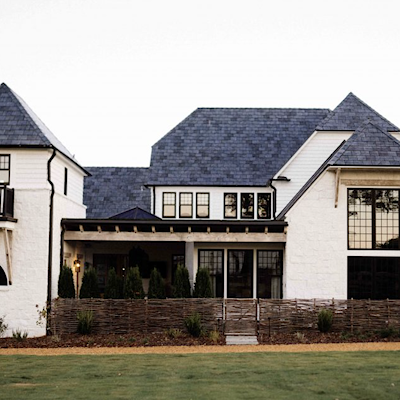
Material composition*Water 16.5070 - 58.1590%, Calcium Carbonate 4.766 - 47.4030%, Potassium Polysilicate 1.9740 - 13.8170%, Undisclosed Chemical #1 1.9600 - 25.3460%, Hydroxyethyl Cellulose 0.2890 - 0.7390%, Oxirane, 2-Methyl-, Polymer with Oxirane, Ether with 1,2-Hexanediol (2:1) 0.1760 - 1.0370%, Potassium Methylsilanetriolate 0.0700 - 0.2980%, Glassy Sodium Phosphate 0.0230 - 0.6060%, Poly(Oxy-1,2-Ethanediyl), Alpha-Sulfo-Omega-(Undecyloxy)-, Branched and Linear, Sodium Salt 0.0210 - 0.2720%, Poly[Oxy(Methyl-1,2-Ethanediyl)], _-(1-Oxo-9-Octadecenyl)-_-Butoxy-, (Z)- 0.0190 - 0.1100%, Sodium Bisulfate 0.0140 - 0.1800%, Sodium Hydroxide 0.0120 - 0.1490%, Sodium Persulfate 0.0100 - 0.1230%, Limestone; Calcium Carbonate 0.0000 - 37.7520, Titanium Dioxide 0.0000 - 24.8420%, Talc 0.0000 - 7.3030%, Chlorite 0.0000 - 7.3030%, Aluminum Oxide 0.0000 - 1.2540%, Kaolin Clay (Impurity/Residual), Magnesite 0.0000 - 0.5090%, Starch 0.0000 - 0.4100%, Dolomite 0.0000 - 0.3830, Quartz (Impurity/Residual), Silica, Amorphous 0.0000 - 0.1330%, 1,1,1-Tri(Hydroxymethyl)Propane 0.0000 - 0.1070% *as reported by the manufacturer AVAILABLE SIZINGPint, quart or gallon COLORSAvailable in a variety of colors CERTIFICATIONS & DISCLOSURES
Health Product Declaration (HPD)
Declare Label
Environmental Product Declaration (EPD)
Safety Data Sheet (SDS)
USDA Certified Biobased Product Label
Other
Cradle to Cradle Material Health Certification
Cradle to Cradle | Silver
Additional DocumentsLast UpdatedOctober 26, 2022 |
| Romabio | BioGrip Primer |
BioGrip PrimerMineral paints, like this one, provide a great alternative to acrylic paints and primers. They are toxin-free, odorless, asthma-free, and naturally mold-resistant. BioGrip is Romabio’s mineral primer. This primer is designed for interior and exterior use and works well on drywall, portland cement, cementitious siding, and stucco. In 2015, this product was verified by a third party to be free of the harmful ingredients on the International Living Future Institute’s Red List. Titanium Dioxide is being used for pigmenting, the whiter the pigment, the more titanium dioxide. Note: We will update the HPD once we received the renewed one. Manufacturer foresees early 2023 for renewal. CategoryPaint / Mineral, Potassium SilicateManufacturerRomabio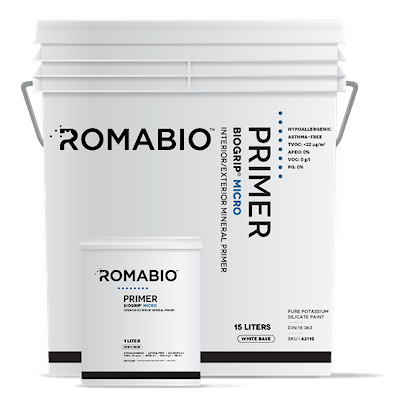
Material composition*Water 16.5070 - 58.1590%, Calcium Carbonate 4.766 - 47.4030%, Potassium Polysilicate 1.9740 - 13.8170%, Undisclosed Chemical #1 1.9600 - 25.3460%, Hydroxyethyl Cellulose 0.2890 - 0.7390%, Oxirane, 2-Methyl-, Polymer with Oxirane, Ether with 1,2-Hexanediol (2:1) 0.1760 - 1.0370%, Potassium Methylsilanetriolate 0.0700 - 0.2980%, Glassy Sodium Phosphate 0.0230 - 0.6060%, Poly(Oxy-1,2-Ethanediyl), Alpha-Sulfo-Omega-(Undecyloxy)-, Branched and Linear, Sodium Salt 0.0210 - 0.2720%, Poly[Oxy(Methyl-1,2-Ethanediyl)], _-(1-Oxo-9-Octadecenyl)-_-Butoxy-, (Z)- 0.0190 - 0.1100%, Sodium Bisulfate 0.0140 - 0.1800%, Sodium Hydroxide 0.0120 - 0.1490%, Sodium Persulfate 0.0100 - 0.1230%, Limestone; Calcium Carbonate 0.0000 - 37.7520, Titanium Dioxide 0.0000 - 24.8420%, Talc 0.0000 - 7.3030%, Chlorite 0.0000 - 7.3030%, Aluminum Oxide 0.0000 - 1.2540%, Kaolin Clay (Impurity/Residual), Magnesite 0.0000 - 0.5090%, Starch 0.0000 - 0.4100%, Dolomite 0.0000 - 0.3830, Quartz (Impurity/Residual), Silica, Amorphous 0.0000 - 0.1330%, 1,1,1-Tri(Hydroxymethyl)Propane 0.0000 - 0.1070% *as reported by the manufacturer AVAILABLE SIZING1 liter/1 quart, 2.5 liter/0.67 gallon, or 15 liter/4 gallon COLORSWhite CERTIFICATIONS & DISCLOSURES
Health Product Declaration (HPD)
Declare Label
Environmental Product Declaration (EPD)
Safety Data Sheet (SDS)
USDA Certified Biobased Product Label
Other
Free of Red List Ingredients
Cradle to Cradle | Silver
Cradle to Cradle Material Health Certification
Additional DocumentsLast UpdatedOctober 26, 2022 |
| Keim | Innostar |
InnostarUsed in Healthier Affordable HousingAvailable At the Donghia Materials LibraryMineral paints provide a healthier alternative to acrylic paints and primers as it is made from Potassium Silicate. They avoid asthmagens, are odorless, and are naturally mold-resistant. Keim Mineral Silica Paint has low to no VOCs. It is made from natural ingredients. This product is NaturePlus certified and has Cradle2Cradle Material Health Gold certification. The Innostar Line is a matte, scrub-rate class A finish with a coverage efficiency that allows for one primer & one paint coat only. Titanium Dioxide is being used for pigmenting, the whiter the pigment, the more titanium dioxide. CategoryPaint / Mineral, Potassium SilicateManufacturerKeim
Material composition*Silica sol (aqueous solution) 10-15%, Polymer (polyacrylate) 2.5-5%, Titanium dioxide (white) and/or inorganic pigments 0-20%, Mineral Fillers (silicate and calcite) 25-35%, Water 25-35%, Hydrophobing agents 2.5-5%, Thickeners <1%, Stabilisers <1%, Wetting agents <1%, Defoamers <1% *as reported by the manufacturer AVAILABLE SIZING8kg or 20kg buckets COLORSVarious CERTIFICATIONS & DISCLOSURES
Health Product Declaration (HPD)
Declare Label
Environmental Product Declaration (EPD)
Safety Data Sheet (SDS)
USDA Certified Biobased Product Label
Other
GREENGUARD | Gold
Natureplus
Cradle to Cradle | Gold
Last UpdatedApril 08, 2024 |
| Roxul | Comfortboard 80 |
Comfortboard 80Available At the Donghia Materials LibraryLow-Embodied Carbon MaterialComfortboard 80 is a mineral wool insulation for below grade applications. This product meets HML's low embodied carbon standards per Rockwool's EPD for its stone wool insulation. Production facilities are located in the US and Canada. For shorter transportation, the North American Market is therefore preferable. Amongst all it's facilities, Rockwool's Ontario location uses the highest amount of recycled material. Comfortboard 80 R value is declared as up to R21. Per Roxul's EPD, this product meets HML's criteria for low embodied carbon.*NOTE: This product contains a higher percentage of phenol-formaldehyde. According to the manufacturer: "Phenol formaldehyde is allowed in rigid mineral wool insulation for exterior applications (such as rain screen assemblies or foundation insulation). While rigid mineral wool insulation does contain some formaldehyde, most of the formaldehyde is eliminated in the production process through a chemical reaction and high heat. Rigid mineral wool insulation installed on the exterior of the building possess less risk to humans and ecosystem than rigid foam insulation products, which almost always contain HFRs and use blowing agents with high global warming potential." Roxul's R-value range is declared at 4.2/inch. CategoryInsulation / Fibrous, Cellulosic, Granular, Mineral FiberManufacturerRoxul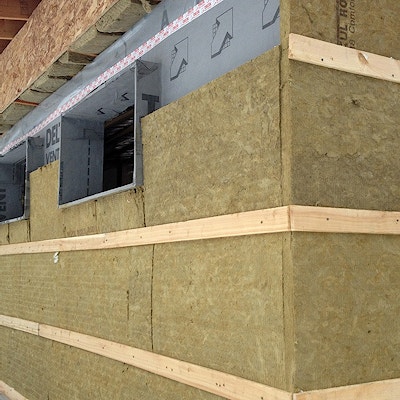
Material composition*Stone Wool 95%-100%, Syrups 1-2%, Hydrolyzed Starch 1-2%, Phenol-formaldehyde 0-5%, Urea 0-1%, Undisclosed 0-1% *as reported by the manufacturer CERTIFICATIONS & DISCLOSURES
Health Product Declaration (HPD)
Declare Label
Environmental Product Declaration (EPD)
Safety Data Sheet (SDS)
USDA Certified Biobased Product Label
Other
GREENGUARD | Gold
Last UpdatedApril 01, 2024 |
| Alkemis Paint | Interior Mineral Paint & Primer |
Interior Mineral Paint & PrimerThis mineral-based paint allows for an exceptionally durable bond between paint and substrate that can last for decades. Free of plasticizers, solvents, preservatives, and biocides, Alkemis does not off-gas and is conducive to a better indoor climate. Alkemis is C2C certified with a Material Health Gold ranking. The paint is a velvet-matte, scrub-rate class A finish. CategoryPaint / Mineral, Potassium SilicateManufacturerAlkemis Paint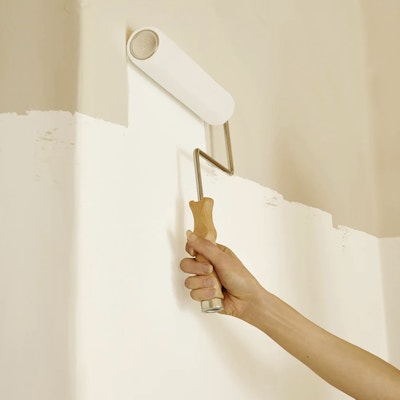
Material composition*Silica sol, titanium dioxide, inorganic natural color pigments, silicate and calcite fillers, water, proprietary hydrophobic agents, proprietary thickening agent, polymer, proprietary defoamer and stabilizer *as reported by the manufacturer AVAILABLE SIZINGGallon, quart, or 3.5 gallons CERTIFICATIONS & DISCLOSURES
Health Product Declaration (HPD)
Declare Label
Environmental Product Declaration (EPD)
Safety Data Sheet (SDS)
USDA Certified Biobased Product Label
Other
Cradle to Cradle | Gold
Additional DocumentsLast UpdatedJanuary 23, 2024 |
| Coverings Etc. | Bio-Glass® |
Bio-Glass®Available At the Donghia Materials LibraryBio-Glass is composed of 100% recycled glass, free from colorants and additives. Its composition is primarily crystalline silica in the form of quartz. Bio-glass is recommended for countertops, walls, and floors, offering versatility in architectural applications. The product is C2C Certified® with an overall rating of gold and contributes to LEED. CategoryDimensional Surface, GlassManufacturerCoverings Etc.
Material composition*100% Recycled Glass *as reported by the manufacturer CERTIFICATIONS & DISCLOSURES
Health Product Declaration (HPD)
Declare Label
Environmental Product Declaration (EPD)
Safety Data Sheet (SDS)
USDA Certified Biobased Product Label
Other
Cradle to Cradle | Gold
Additional DocumentsLast UpdatedMarch 19, 2024 |
The products in this collection have all been evaluated holistically for their contents and performance. To be considered, the product must also have a primary ingredient (by volume) that is derived or harvested from minerals or a mineral-derived substance that plays a critical role in the product’s performance or manufacturing avoiding additives harmful to human and planet.
Spec Guidance
Inquire with manufacturers for transparency and LCA information as much as possible. Materials new to the market may not yet have certifications and disclosures and often are made proprietarily.
Consider impacts of mining processes to local ecologies such as biodiversity loss and water contamination.
Consider the scale of mineral extraction. Minerals are non-renewable and should not be depleted.
Use local minerals when possible to reduce the carbon footprint.
Avoid additives such as cement, fly ash, plastics, non-specific post-consumer recycled contents, and asphalt.
Opt for upcycled minerals when possible, e.g., gypsum.
Opt for minerals, e.g. lime, which sequester carbon.
Ensure mineral recyclability by designing for disassembly.
Updated February 27, 2018
Join Our Academic Network
Get Access to our carefully researched and curated academic resources, including model syllabi and webinars. An email from an academic institution or a .edu email address is required. If your academic institution does not use .edu email addresses but you would like to join the network, please contact healthymaterialslab@newschool.edu.
Already have an account? Log in